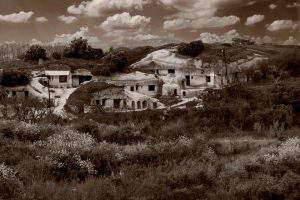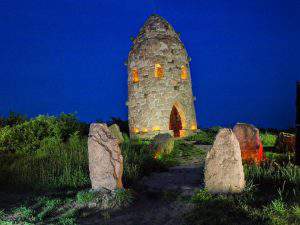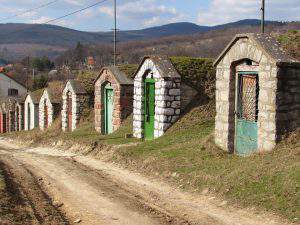The fascinating hive stones and stone culture of Bükkalja
According to vjm.hu, Hungary’s regions are all homes to natural and artificial wonders that have been listed as Hungarikums for quite a while. We can discover wine regions, thermal spas, rural experiences, or the mysterious stone culture of Bükkalja.
One of Hungary’s most unique regions is quite fascinating due to its geographic evolution and geologic structure. The stone culture of Bükkalja plays an important role as one of the natural environments among Hungarikums.
However, the stone culture doesn’t only include the Bükkalja landscape, but also the peculiar relationship network of the locals, the importance of stone as a building material, the stonework profession, the cave homes and the wine cellars.

Photo: www.facebook.com/Kaptárkő Természetvédelmi és Kulturális Egyesület
The stone culture of Bükkalja – which’s most archaic layer is formed by the hive stones – is a well-confinable, complex natural-landscape management-cultural system with historic roots and traditions.
You can find more details about the hive stones and the history, evolution and location of other stone formations on the Hive Stone Association’s website. Thanks to the tireless work of the association, the Hungarian hive stones were pronounced as protected natural monuments in 2014, and were listed as Hungarikum in 2016.

Photo: www.facebook.com/Kaptárkő Természetvédelmi és Kulturális Egyesület
It is said that the hive stones have natural values and are cultural historic monuments at the same time. After the volcanic tufas that build up the Bükkalja were created by intense eruptions in the Miocene era, erosion, fragmentation, wind and precipitation formed the cones and the stone ranges of the area. But then came the mankind, who slightly transformed the surface.
41 localities are known in Bükkalja with 82 hive stones and 479 chambers in the rock formations. All in all, 564 chambers were counted in Hungary until 2013. The most spectacular and characteristic group is found near Szomolya and Cserépváralja, but you can also find hive stones in the vicinity of Sirok, Egerbakta, Egerszalók, Noszvaj, Bogács, Cserépfalu, Tibolddaróc and Kács.

Photo: www.facebook.com/Kaptárkő Természetvédelmi és Kulturális Egyesület
It is still a mystery why these hive chambers were created and what they were used for. However, there are several guesses.
According to the most probable and prevalent theory, the chambers of the hive stones were created in the Middle Ages, and they are probably the reminiscence of the forest rock apiary.
If you want to get to know the sights of the stone culture better, keep an eye out for the Stone Culture Association’s tours, because they organise one every month. This way you can admire the wine cellars carved into tufa, stone barns, cosy cave homes, stone bridges arching over streams, stone fences, stone benches, beautifully carved gravestones, crosses and statues along the roads and, of course, the mysterious hive stones.

Photo: www.facebook.com/Kaptárkő Természetvédelmi és Kulturális Egyesület
The tours are organised to get to know the cultural and natural values of Bükkalja, and cover a 15-kilometre-distance in 6-7 hours while one can enjoy the beautiful sights.
Featured image: www.facebook.com/BükkiNemzetiParkIgazgatóság
Ce: bm
Source: http://vjm.hu/
please make a donation here
Hot news
VIDEO: What’s happening in Hungary? Food delivery rider on the motorway
ESG law strengthens the competitiveness of Hungarian businesses
SHOCKING: Hungary’s guest worker numbers exposed!
According to Minister Navracsics, this one policy will be priority of Hungarian presidency – UPDATED
Today only: Hungarian airline Wizz Air is offering cheap flights!
Budapest Airport wins best airport in the region award for the 11th time!




